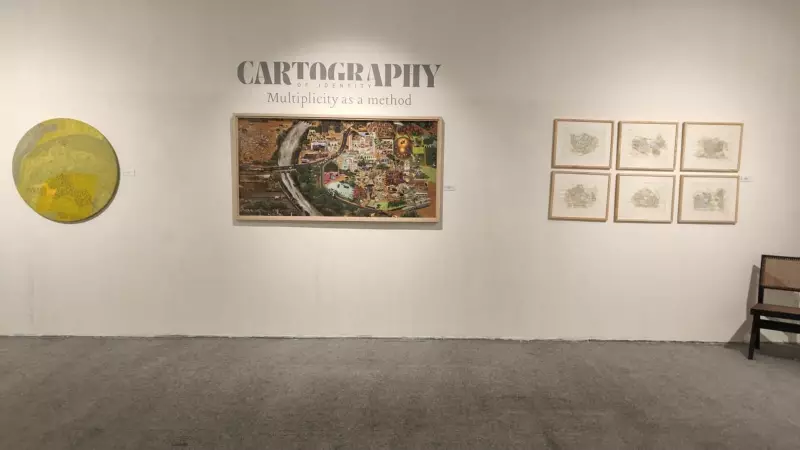
In a groundbreaking exhibition that challenges conventional notions of geography, Apparao Galleries presents Cartography of Identity at Bikaner House, where maps transcend their traditional purpose to become profound expressions of human experience. Curated by Sharan Apparao, this innovative showcase reimagines cartography as a visual language of emotion, memory, and personal history.
Beyond Geographical Boundaries
The exhibition, which continues until November 17, represents nearly nine months of meticulous planning and reflects Sharan's deep fascination with the intersection of science, mathematics, and artistic expression. "The grid, the map, the plan — they all come from a relationship between man, cosmos and aesthetics," Sharan explains, highlighting how even traditional temple architecture incorporates planetary distances and the golden ratio.
Featuring works from both established and emerging artists including RM Palaniappan, Orijit Sen, Satyendra Kumar, S Sujil, and Smriti Dixit, the exhibition demonstrates how each creator redefines the very essence of mapping. Rather than focusing on scales and measurements, these artists explore personal narratives and cosmic connections through their unique visual vocabularies.
Artistic Interpretations of Space and Memory
Orijit Sen's remarkable piece "The Place Remembers its People" captures the vibrant complexity of a Punjab town through dense, narrative-rich detailing. The artwork beautifully illustrates how diverse individuals coexist and flourish within shared spaces, with Sharan noting that "the city grid explodes into something else, personifying how identity unfolds within space."
Smriti Dixit employs an innovative approach by incorporating found objects and antique maps to create collages layered with memory. Her work "Andaman Islands" features a small box containing discovered treasures—stones, shells, and small skeletons—arranged atop a map of the location, creating a tangible connection between geography and personal discovery.
Abstract Mapping and Philosophical Dimensions
Some artists approach cartography through abstraction and data visualization. Shijo Jacob's "Looking Through The Map" transforms geographical coordinates into compelling visual forms, demonstrating how numerical data can evolve into entirely different experiences when perceived visually.
RM Palaniappan's "Berlin/e Effect / Chapter II (2000)" stands as a powerful digital reworking of earlier sketches inspired by his 1999 visit to Germany. The piece contemplates the aftermath of war and the evolving contours of human experience, informed by the artist's fascination with mathematics, astronomy, and philosophical inquiry.
Chantel Jhumel contributes to this reimagining of traditional forms with "Pinprick Tamil Geometry," which revitalizes the ancient art of kolam making through contemporary cartographic principles.
The Curatorial Challenge
While the exhibition flows with apparent ease, Sharan acknowledges the precision required to curate such diverse works. "The challenge is to make the works speak to each other," she reveals. "It's like constructing a landscape where one form must flow seamlessly into the next."
The overarching theme suggests that identity, much like a map, remains fluid rather than fixed—constantly shifting with perspective and time. The lines and grids that once demarcated physical territories now trace emotional landscapes and memory pathways. In these extraordinary works, mapping becomes less about navigation and more about introspection—a method for locating one's personal coordinates within an ever-changing universe.
The Cartography of Identity exhibition successfully demonstrates that the most meaningful maps might not guide us through physical spaces, but rather help us navigate the complex terrain of human existence and self-discovery.





